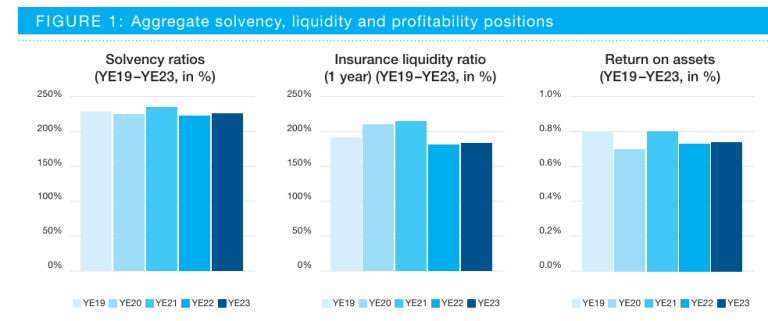The International Association of Insurance Supervisors (IAIS) published its mid-year preview of the 2024 Global Monitoring Exercise (GME) analysis in advance of publishing the Global Insurance Market Report (GIMAR) in December.
Building on data collected from approximately 60 of the largest international insurance groups and aggregate sector-wide data from supervisors across the globe, covering over 90% of global written premiums, the GIMAR mid-year update shares interim results on solvency, profitability and liquidity positions and systemic risk developments, and provides an update on the key themes in scope of the 2024 GME.
Shigeru Ariizumi, IAIS Executive Committee chair, said in a statement. “While aggregate systemic risk scores increased slightly at year-end 2023, the interim GME analysis found stable solvency, liquidity and profitability positions in 2023 reflecting the overall financial stability of the insurance sector.”
Interim results
Solvency, profitability and liquidity: Interim results from the 2024 individual insurer monitoring (IIM) point to slight improvements in solvency, liquidity and profitability positions. The main factors supporting better solvency positions include higher interest rates in many regions (which can lower the present value of liabilities, particularly for life insurers offering longer-term products), higher premium income, lower dividend payments by insurers, and an upturn in financial markets.

Some insurers noted changes to accounting standards, particularly IFRS 17, as a factor affecting profitability. Increases in liquidity positions were driven by higher dividend upstreams (where a subsidiary insurer distributes profits to its parent insurer), completion of asset sales, or better alignment of liquidity sources to liquidity needs. At the same time, some insurers experienced declines in liquidity because of increased cash outflows or changes in their investment portfolio composition.
Systemic risk developments: Aggregate IIM systemic risk scores increased slightly compared to the year-end 2022 data. The key driver for the increase was a rise in the level 3 assets indicator, primarily driven by changes to accounting standards (IFRS 9 and 17). The IAIS is conducting further analysis to evaluate options for a more comparable, substance-based risk assessment of mark-to-model assets that is less dependent on accounting treatment.
Key themes in the 2024 GME
As part of its yearly GME process, the IAIS identifies sector-wide macroprudential themes for deeper discussion amongst insurance supervisors worldwide. The 2024 GME continues to focus on last year’s themes, as they remain a priority for both insurers and supervisors. These themes include:
(1) Risks faced by insurers in light of the challenging macroeconomic environment
Specific areas of attention are transmission channels from geopolitical risks, second-round effects from commercial real estate exposures, debt sustainability of fixed-income assets and the impact of digitalization and artificial intelligence on the insurance sector.
(2) Structural shifts in the life insurance sector.
The IAIS will continue its monitoring and assessment of potential financial stability risks arising from structural shifts in the life insurance sector. These shifts relate to the increased allocation of capital to alternative assets and the increased use of cross-border asset-intensive reinsurance. Supervisory matters related to these themes will feed into an Issues Paper planned for publication in 2025.
Other areas of increased supervisory focus
Additional focus areas for the 2024 GME include operational resilience to cyber risk and climate-related risks. The IAIS is currently developing operational resilience objectives for supervisors to support insurers’ operational resilience, including cyber resilience.
Read the full report

